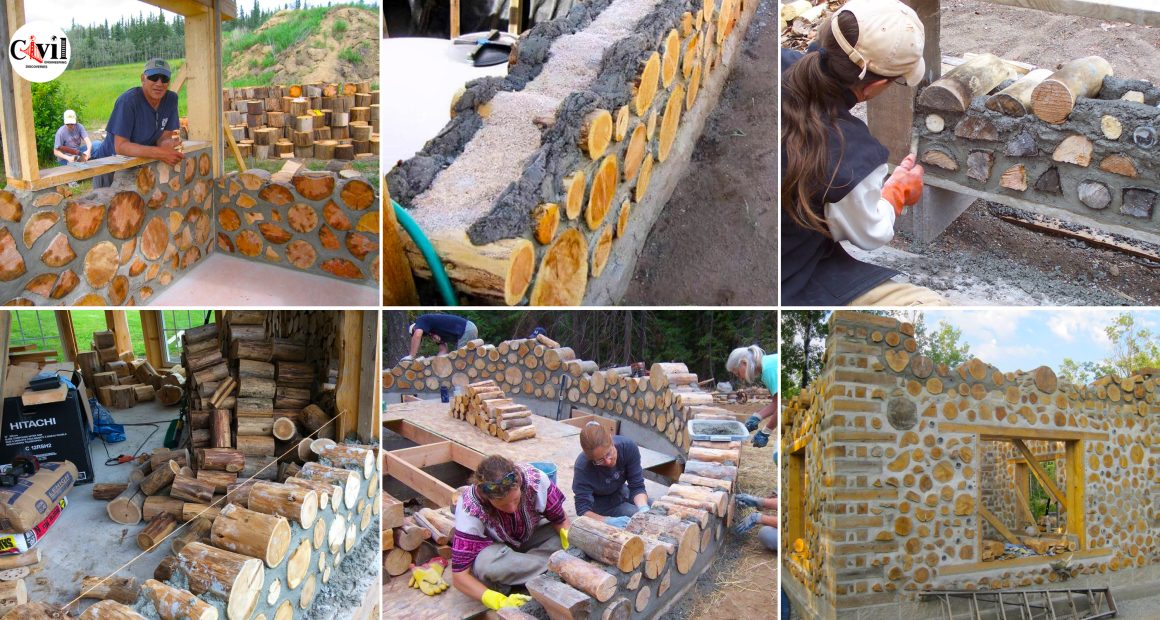Cordwood construction is a unique and sustainable building method that utilizes short logs, typically 12–24 inches long, laid crosswise and secured with mortar or cob to create walls. It offers a variety of benefits, including:
Advantages:
- Cost-effective: Cordwood construction can be significantly cheaper than traditional methods, especially when using locally sourced materials like salvaged wood or downed trees.
- Sustainable: This technique utilizes renewable resources, reduces waste, and minimizes environmental impact.
- Energy-efficient: Thick cordwood walls provide excellent insulation, leading to lower heating and cooling costs.
- Unique aesthetic: Cordwood walls create a rustic and natural appearance, adding character and beauty to any home.
- DIY-friendly: With some basic carpentry and masonry skills, cordwood construction can be a rewarding do-it-yourself project.
Disadvantages:
- Time-intensive: Building with cordwood requires more time and labor compared to conventional methods.
- Moisture management: The exposed ends of the logs require proper sealing and protection to prevent moisture intrusion and rot.
- Structural limitations: Load-bearing cordwood walls may have limitations in height and complexity compared to other methods.
- Limited availability of skilled builders: Finding experienced cordwood builders may be challenging depending on your location.
Here’s a breakdown of the basic steps involved in cordwood construction:
1. Foundation:
- Prepare a level and stable foundation suitable for the chosen wall thickness.
2. Cordwood preparation:
- Select straight and split logs of uniform length.
- Dry the logs to prevent moisture-related issues.
3. Mortar or cob preparation:
- Choose an appropriate mortar mix or prepare cob for binding the logs.
4. Wall construction:
- Lay the first course of logs on the foundation, ensuring a level and plumb wall.
- Fill the spaces between the logs with mortar or cob.
- Continue laying subsequent courses, staggering the joints for strength.
5. Chinking and finishing:
- Apply chinking material to fill any remaining gaps and cracks.
- Finish the walls with plaster, stucco, or other desired materials for weather protection and aesthetics.
Here are some additional points to consider:
- Log selection: Choose decay-resistant wood species like cedar, locust, or oak.
- Mortar or cob: Mortar offers greater strength and durability, while cob provides better insulation and breathability.
- Wall thickness: Thicker walls offer better insulation but require more materials and construction time.
- Door and window openings: Plan for openings in advance and incorporate them into the wall construction.
- Roofing: Cordwood walls can support different roof types, including traditional trusses or green roofs.
With proper planning, careful execution, and attention to detail, cordwood construction can be a viable and rewarding option for building a unique, sustainable, and energy-efficient home.

















































